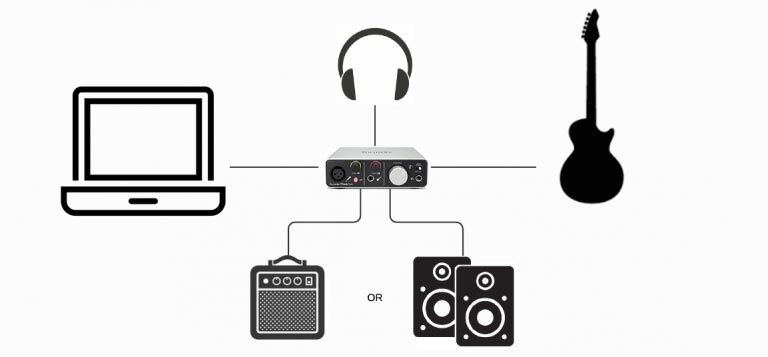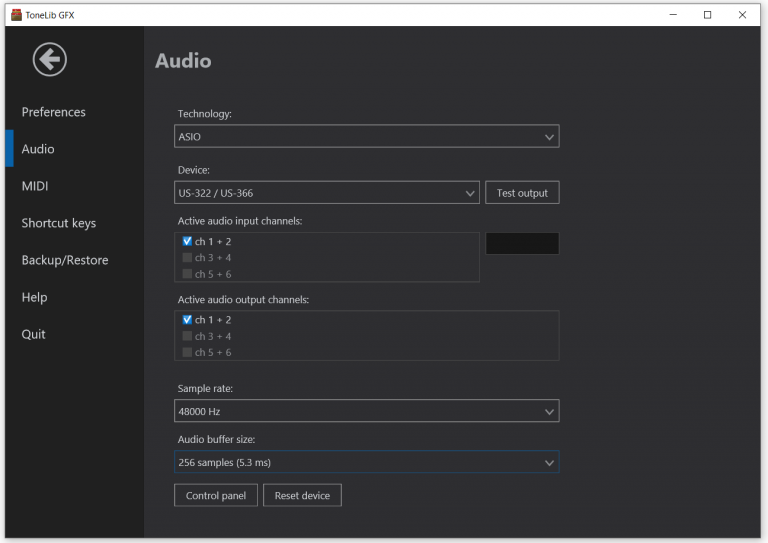How to Connect an Electric Guitar to a Computer
Connecting an electric guitar to a computer is easy, but it does require a special piece of hardware called an audio interface.
To connect your electric guitar to a computer, you need to use an audio interface that will safely process your guitar’s signal into something your computer can use. If your computer has audio input jacks, you cannot directly plug your electric guitar into it and you must use an audio interface.
If you try to plug your guitar directly into your computer’s mic or line-in input jacks using an adapter, you risk damaging your guitar or your computer. The audio input jacks weren’t designed to handle input from your guitar and it won’t work.
How to Connect an Electric Guitar to a Computer
The most popular way to connect an electric guitar to a computer is by using an audio interface. An audio interface is a simple box that allows you to plug your guitar or other inputs into it, and it converts the signal into a digital signal to send via USB to your computer. Most audio interfaces also allow you to connect headphones directly into the interface which allows you to play guitar in silence. Most audio interfaces also offer MIDI (Musical Instrument Digital Interface) inputs and outputs, which allow you to connect a MIDI controller to your computer.

How to set up an audio interface with Tonelib GFX
Prior to setting up, please refer to the manufacturer’s website of your audio interface. Some outdated interfaces don’t have the latest driver to run on newer operating systems such as OS X 10.14 or Windows 10. Please make sure they have the driver for your operating system.
Tonelib GFX can be used as plugins or standalone software. If you want to use them as standalone applications, please set up your audio device first.
Note: If you’re using Windows, we strongly suggest using ASIO driver for “Audio Technology”. If there’s no official ASIO driver, you can find the latest of generic ASIO driver here: http://www.asio4all.com/

Latency
There’s a slight delay called latency that occurs because it takes the audio a number of milliseconds to travel through the interface input, into the computer, back out of the computer and appear at the interface output. During recording, that can be distracting, because you’ll hear your guitar sound coming back a little late, which can totally throw your timing off.
One way to deal with latency is to adjust the audio buffer (also known as “buffer size”) in TL GFX to its lowest value. The buffer controls the amount of time the computer allows for processing and is measured in samples (64, 128, 256, etc.). The lower the buffer, the less latency. The tradeoff is that lower buffer settings put more strain on your computer, and that can result in clicks, pops and diminished audio quality.